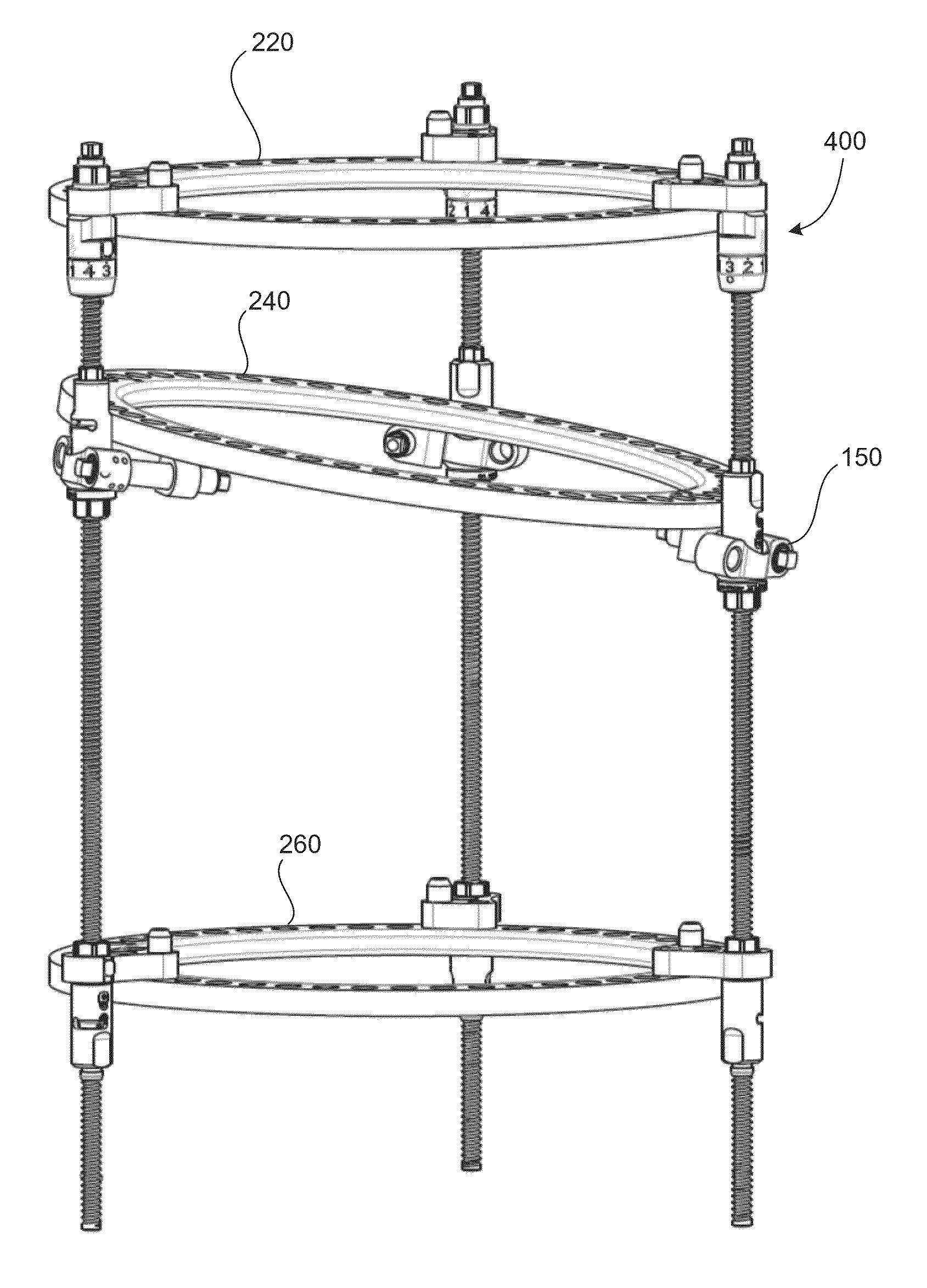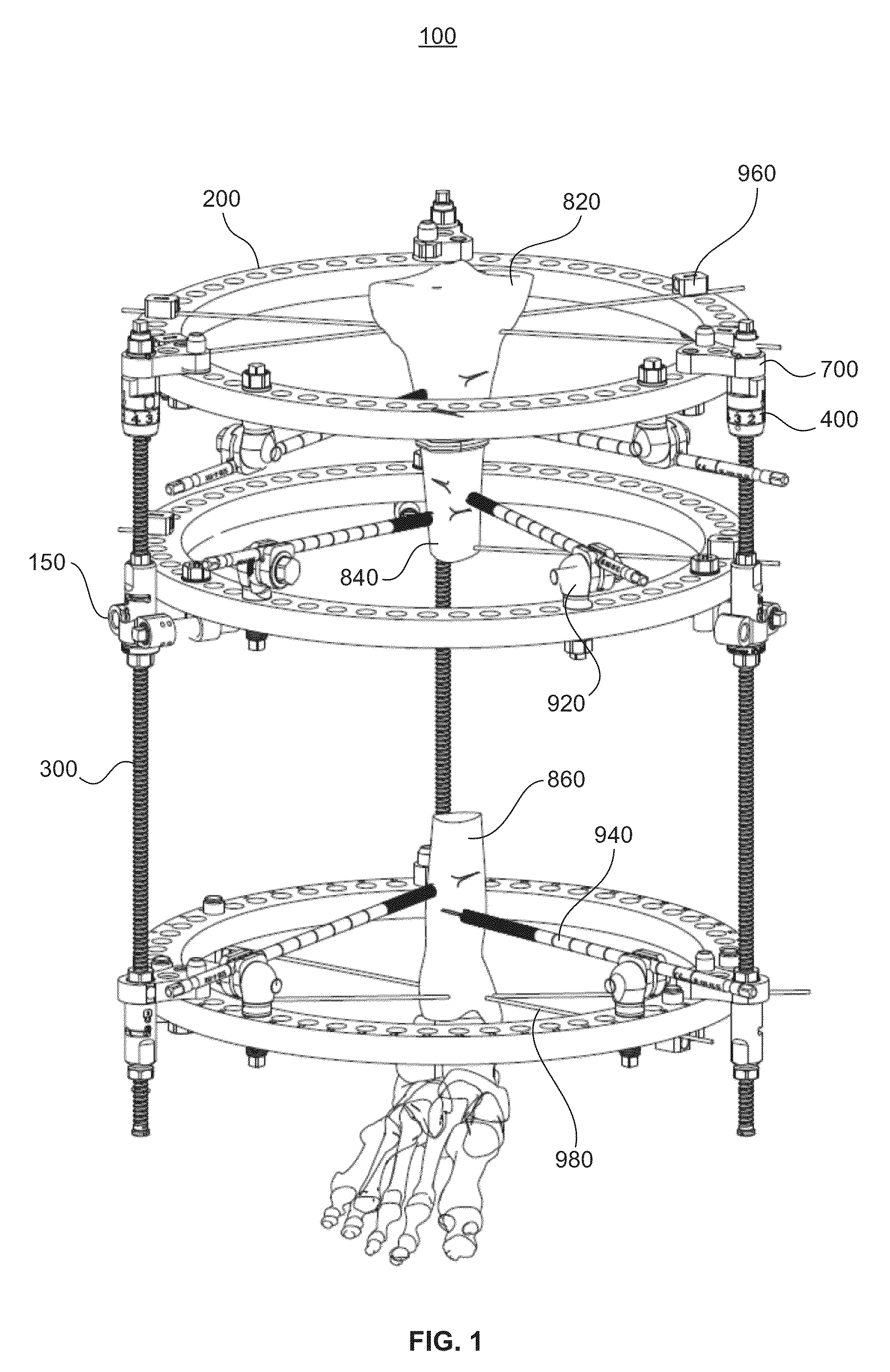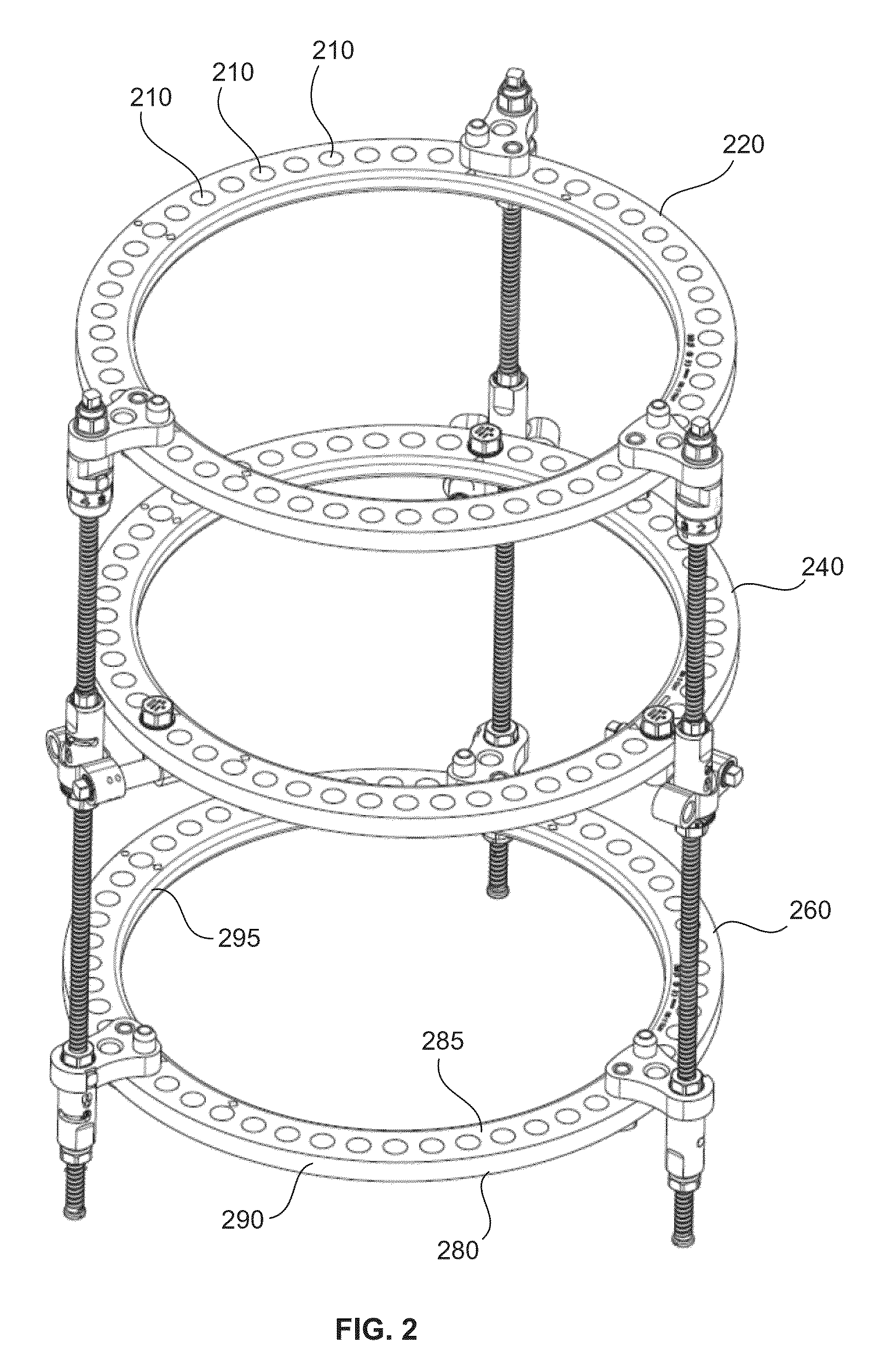Bone transport external fixation frame
a fixation frame and bone technology, applied in the field of bone transport external fixation frame, can solve the problems of limited patient access, difficult for patients to make the required daily adjustments, and generally not allowing significant manipulation of external fixation frame,
- Summary
- Abstract
- Description
- Claims
- Application Information
AI Technical Summary
Benefits of technology
Problems solved by technology
Method used
Image
Examples
first embodiment
[0052]Referring to FIGS. 1-3, a bone transport frame 100 is shown. The bone transport frame 100 generally comprises a plurality of bone transport assemblies 150, a plurality of bone transport rings 200, a plurality of strut assemblies 300, a plurality of top click mechanisms 400, and a plurality of devices that interact with different segments or portions of a bone.
[0053]Each of the bone transport rings 200 has a lower ring surface 280 and an upper ring surface 285 as well as an outer ring surface 290 and an inner ring surface 295. Upper 285, lower 280, inner 295, and outer 290 ring surfaces are substantially flat such that each ring has a vertical cross section that is substantially rectangular. In other embodiments, ring surfaces 280, 285, 290 and 295 need not be flat, but rather can take on various shapes to accommodate other devices such as clamps, for example.
[0054]Along the circumference of each of the bone transport rings 200 resides a plurality of through-holes 210 that exte...
second embodiment
[0080]Referring to FIGS. 22-23, a bone transport frame 100′ is shown. The bone transport frame 100′ generally includes a plurality of bone transport assemblies 150′, a plurality of bone transport rings 200 and a plurality of strut assemblies 300.
[0081]One difference between the second embodiment shown in FIGS. 22-23 and the first embodiment shown in FIGS. 1-3 is that the bone transport assembly 150′ coupled to the medial ring 240 includes a different structure such that the gradual translation of the medial ring 240 does not occur by way of a clicking mechanism.
[0082]The second embodiment of the bone transport assembly 150′ comprises a quick release mechanism 600, a ball jointed flange 705, a series of hinge pin and bracket assemblies, a series of nuts, and a translational bolt.
[0083]The ball jointed flange 705 has a hyperbolic collar 595 much like the hyperbolic collar 595 seen on the ball joint 500 of the first embodiment. This ball jointed flange 705 is also coupled to the quick ...
third embodiment
[0084]Referring to FIGS. 24-28, there is shown a bone transport frame 100″. A difference between the bone transport frame 100″ shown in FIGS. 24-28 and previous embodiments is that medial ring 240 does not have the capability of horizontal translation.
[0085]Structurally speaking, the embodiment shown in FIGS. 24-28 is obtained by taking the embodiment of the bone transport frame 100′ shown in FIGS. 22-23, removing the translating bolt 730 and accessories, and directly attaching the ball jointed flange 705 to the medial ring 240. As disclosed elsewhere herein, the ball jointed flange 705 can connect to the medial ring 240 by virtue of a retaining pin 720 that extends through both a through-hole 210 of the medial ring 240 and through an anterior through-hole 740 of the ball jointed flange 705. This permits the medial ring 240 to move such that it is no longer parallel with proximal ring 220 and distal ring 260, but there are no mechanisms for translating medial ring 240 toward or away...
PUM
 Login to View More
Login to View More Abstract
Description
Claims
Application Information
 Login to View More
Login to View More - R&D
- Intellectual Property
- Life Sciences
- Materials
- Tech Scout
- Unparalleled Data Quality
- Higher Quality Content
- 60% Fewer Hallucinations
Browse by: Latest US Patents, China's latest patents, Technical Efficacy Thesaurus, Application Domain, Technology Topic, Popular Technical Reports.
© 2025 PatSnap. All rights reserved.Legal|Privacy policy|Modern Slavery Act Transparency Statement|Sitemap|About US| Contact US: help@patsnap.com



